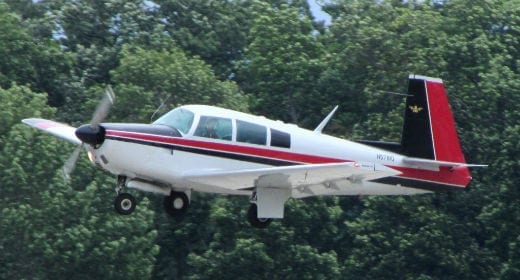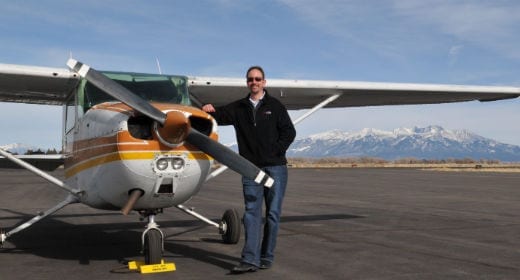
From the archives: Len Morgan on airline flying
Air Facts ArchivesLen Morgan was a legendary airline pilot and writer, but many readers may not know that he wrote for Air Facts before going on to Flying magazine. This article, from the December 1953 edition of Air Facts, takes us back to another era and offers a look at the life of an airline pilot during the glory days.

Fool’s errand: a Mooney flight to remember
I Can't Believe I Did ThatI appeared early the next morning to pick up my ticket and was greeted with a ticket and a box. In the box was a very large screwdriver and a new starter. It didn't dawn on me that this job might be a little more complicated than previously explained.

A break in the chain
I was thereMost stories start out leading the reader step by step to the climax or high point of the tale. Not this one. So here's your spoiler alert. The next sentence you read takes all the mystery out of my story. I nearly had an aircraft accident.

10 things “real pilots” do
John's blogHave you ever met a "real pilot?" I sure haven't--at least not the ones some aviation experts talk about. According to them, real pilots only fly taildraggers, real pilots don't use GPS, real pilots don't cancel flights, etc. I have a different definition of a real pilot.

Close encounters
I was thereI have been flying small airplanes on and off for several decades. I have had close calls before. They tend to happen quickly. I had never had two close calls inside of 20 minutes before that particular Sunday.

76-year crash course: is only the good news fit to print?
Dick's blogIf talking about safety is an aeronautical sin, meet the two biggest perps, my father, Leighton Collins, and myself. Guilty as charged since February, 1938, when AIR FACTS started.

“Well, you are one!”
I was thereAs we landed, my examiner said, “Well, you are one!” which I took to mean either you are a PILOT or you are a REAL SOB. Best not to ask, I thought. We walked back to the FBO, where my flight instructor was pacing like an expectant father.

So, there we were…
I was thereAutorotations are maneuvers that sound and look really scary to the non-pilot. Before I started my training, I had watched many YouTube videos on the subject. I was pretty nervous about my first one. After all, this is an emergency procedure. And an emergency in an aircraft is never a good thing.

Debate: has the iPad made pilots safer?
DebateThe iPad, originally dismissed as a novelty, has now become an essential part of many pilots' flight bags, whether student pilot or airline pro. But have all these features actually made flying safer?

Managing risk in flying: cognitive traps!
TechniqueThe most critical skill in aviation safety is making good decisions, both before flight when time is plentiful and in flight when circumstances change and we may be rushed. The ability to generate and decide between diverse options (often with incomplete information and in the crunch) is essential to mitigate risk and achieve a safe outcome.

Just one of those days
I was thereI signed up for an early January Angel Flight mission in my Cessna P210 turboprop conversion. The morning of the flight, I stepped out at 0530 for my usual run and found mist and drizzle. Uh oh. This is not a good sign.

Go or No Go: Texas storms
Go or No GoAfter spending a nice Easter weekend at home, tonight you'll be flying from Wichita Falls, TX (CWC) to Wichita, KS (ICT) for a presentation at a big conference. The only question is (as usual), will the weather cooperate?

AvGeek is the worst buzzword ever and is damaging aviation
OpinionIf you’ve ever tweeted the hashtag #avgeek, I want to you to exit your World of Warcraft game, put on some pants, slowly climb those steep, dark stairs out of your mom’s basement and quickly make your way to the nearest video store and pick up a VHS copy of The Right Stuff.

The Skycatcher’s death proves the LSA rule is a failure
John's blogLight Sport Aircraft entered the world with high--probably absurd--expectations. These lighter weight, lower cost airplanes allow pilots to fly without a medical certificate, and were supposed to introduce a new generation to the glories of personal aviation. What happened?

Enter nausea – a Pitts introduction
I was thereIt took better than 2 hours for my stomach to finally relocate to where it was supposed to be in my body. Up until that point I’m fairly certain it was just trying out new locations to see how it liked them. This, of course, is after my first aerobatic training flight in Sunquest Aviation’s Pitts S2A.

Searching… for a lost airliner and others
Dick's blogI don’t think that I believed I would ever see a search as long, expensive, and detailed as the one for the Malaysian 777. I did, though, in my time in the business, have some interesting experiences related to searching for lost airplanes.

I have my license – now what?
OpinionNow I'm a private pilot, and I’m just not sure what to do or where to go now. Do I keep adding ratings? A tailwheel endorsement would be cool for sure, but for what purpose? Maybe now that I’ve accomplished my “lifelong dream” there is a bit of a hangover associated?

Heroes and goats
I was thereI immediately reduced the throttle to idle, thinking that I’d had a compressor stall; this action was followed shortly by a thought process of: “Now, let me see: I’m forty-five degrees nose up with sixty degrees of bank and I’ve just pulled off any power which might be remaining and the speed is starting to fall. ” Even without the benefit of higher education, I knew this was not good.

Some things are better done without an audience
I was thereThe little Cessna heaved a surrendering sigh as if air were being forced out of a Tupperware bowl. The stall-warning horn began its reedy squall as the nose went up higher and higher. The world went sideways in a multi-colored blur. Then it became deathly quiet; all sound curiously vanished.

A family affair… finally
I was thereIt is Sunday afternoon, I have the two kids strapped into the Mooney and I am about to push the throttle forward… but WAIT, before we go there, we need to take a quick jump back in time, to 2001.
